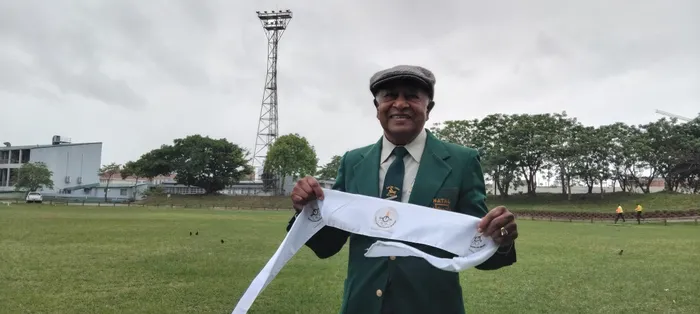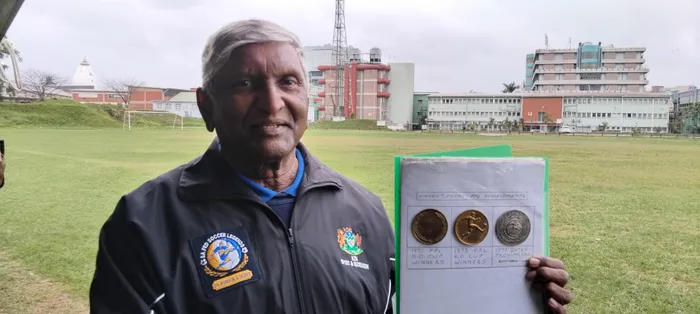Curries Fountain Foundation moves closer to heritage site status in Durban

Maya Singh, the president of the Curries Fountain Heritage Preservation Foundation, at a heritage day gathering on Wednesday.
Image: Zainul Dawood
Soccerites, former football administrators, sports bodies, and fans reminisced about the impact Curries Fountain had on non-racial ethos during a national heritage day gathering at the soccer stadium on Wednesday.
The Curries Fountain Heritage Preservation Foundation hosted the event while waiting for the KwaZulu-Natal Amafa and Research Institute to declare it a heritage site.
The foundation hopes that the landmark will serve the city, the province, and the country as a major tourist attraction, as it has served millions of people in its existence for over 100 years.
Maya Singh, the foundation president, said an article about a parking lot being created at Curries Fountain spurred him on to save the soccer ground from being forgotten.
Singh said that the foundation has already projected the future utility of the Curries Fountain Heritage site with the development of a museum, development of sports, among others, as priorities.
Anand Jayrajh believed that all sports could be used as a vital and powerful tool to encourage youth to involve themselves in social, public, and charitable work.
“This will shape them into becoming useful and upright citizens of the world. Our future depends on them. Curries Fountain must not be out of the public consciousness,” he said.
Curries Fountain Stadium is associated with the Struggle days, particularly in the 1960s and 1970s, which influenced the interaction of people within a socio-political and cultural environment in Durban and South Africa.
The stadium was used for most non-racial sporting codes and was undoubtedly the centre of community activity, where freedom fighters gave speeches to mobilise the public and the world against apartheid.
A partnership exists between the eThekwini Municipality, which owns the land, the Durban University of Technology, the former Durban Sports Ground Association, and representatives from Civil Society structures.
A representative from the KwaZulu-Natal Amafa and Research Institute (The Institute), who did not want to be named, explained that the Institute has made a Grade 2 provincial heritage site application, which will be discussed at a council meeting in November. Once a final decision is made, it will then have to be gazetted by February 2026.
Dr Bhugwan Singh said Curries Fountain weaponised the struggle against apartheid, and although areas were segregated according to racial classification, the sports ground endured multiracial sports.
“This sports ground where we met weaponised our quest for dignity. It is a living monument. Others had made representations in the 1970s to have it declared a heritage site. We cannot afford to take our foot off the pedal with our latest submission,” he said.
Vincent Pillay, 80, a former striker for Verulam Suburb, spoke of his memories, in particular the day he scored three goals in 20 minutes at the Orient end of the grounds.
Pillay displayed two Knock Out (KO) Cup gold medals and a silver medal he won when he represented Natal Professionals against Western Province Professionals in the Inter-provincial KO Cup Final staged at Curries Fountain.
“This place is nostalgic with many unforgettable memories. I recall being paid R8 for a win, R6 for a draw, and R4 for a loss. We played for the love of the game,” he said.
Cassim Docrat spoke of the cricket matches and the fact that memories will live forever, while Lux Gordhan enlightened the crowd about the athletics fraternity and his memories of setting up the track and field. Both spoke of the challenges the sporting codes faced during apartheid.
zainul.dawood@inl.co.za

Vincent Pillay, 80, a former local football player in Durban, with the medals he won at Curries Fountain. His most notable moment was scoring a hat-trick between the goal posts in the background.
Image: Zainul Dawood
Related Topics: